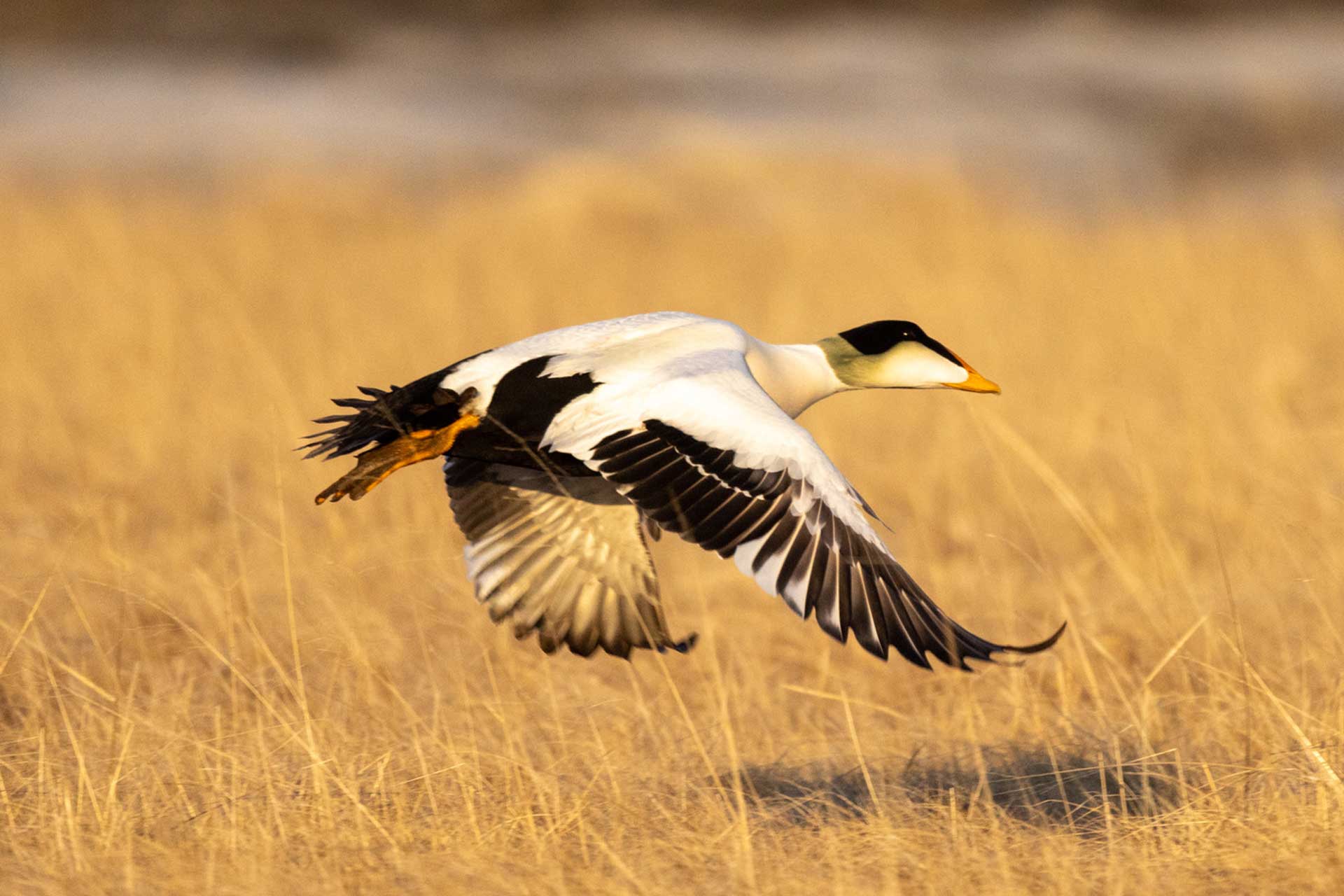Regional variation in common eider exposure to oil-related contaminants in Atlantic Canada

Project Number: 174
Year Funded: 2024
Lead Institution(s): University of Manitoba
Project Lead: Gregg Tomy
Collaborator(s): Jennifer Provencher (ECCC), Robert Ronconi (CWS)
Location: Atlantic Canada
Focal Species: Common Eider (Somateria mollissima)
Project Description: Exposure of marine birds to acute and chronic oil pollution has widespread impacts, including direct mortality as well as a variety of sub-lethal effects such as reduced breeding success and increased physiological stress. These oil-related impacts are due to the toxicity of various substances within oil and gas, notably polycyclic aromatic compounds, PACs. Sea ducks, as diving birds and benthic foragers, may have increased exposure to oil-related pollutants through contact on the water surface, in the water column, and from accumulated toxins in benthic prey which they feed on. Declining populations of common eiders (Somateria mollissima subspecies dresseri) in Atlantic Canada are exposed to a wide range of anthropogenic activities with associated oil-related pollution, but baseline levels of PACs are unknown. Quantifying contaminant loads throughout their breeding range is important for understanding exposure and impacts to the species, but also integral understanding to food safety for Inuit and First Nations in the region who consume eiders and their eggs. Initial studies of PACs in eider eggs from northern Labrador have led to recommendations on limitations to monthly consumption. This study will quantify PAC concentrations in eggs of common eiders across 18 breeding sites in eastern Canada, including Labrador, Newfoundland, the Gulf of St. Lawrence, the Scotian Shelf, and the Bay of Fundy (Gulf of Maine). This will allow for comparisons with PAC concentrations in these and other species across their range, and regional pollution risks (i.e. vessel traffic patterns and pollution incident reports). These results will form baselines against which managers can 1) quantify the impacts of current anthropogenic activities, future spills, and changes in vessel traffic patterns, and 2) assess long-term trends and recovery from oil-related pollution.
Project Reports:
